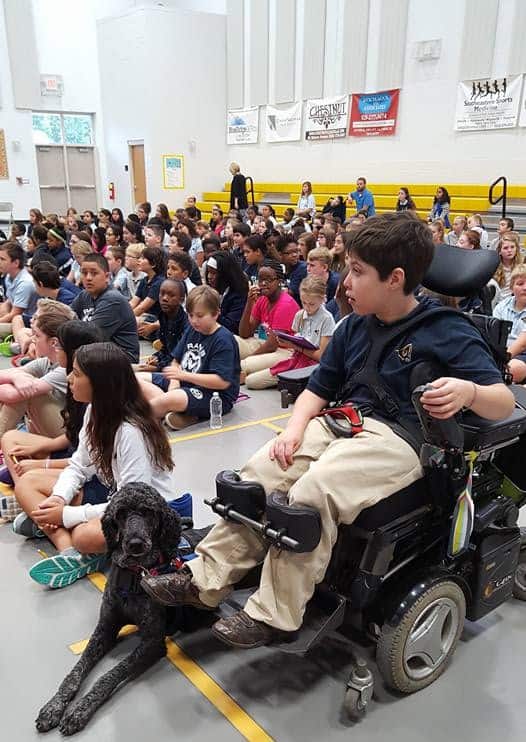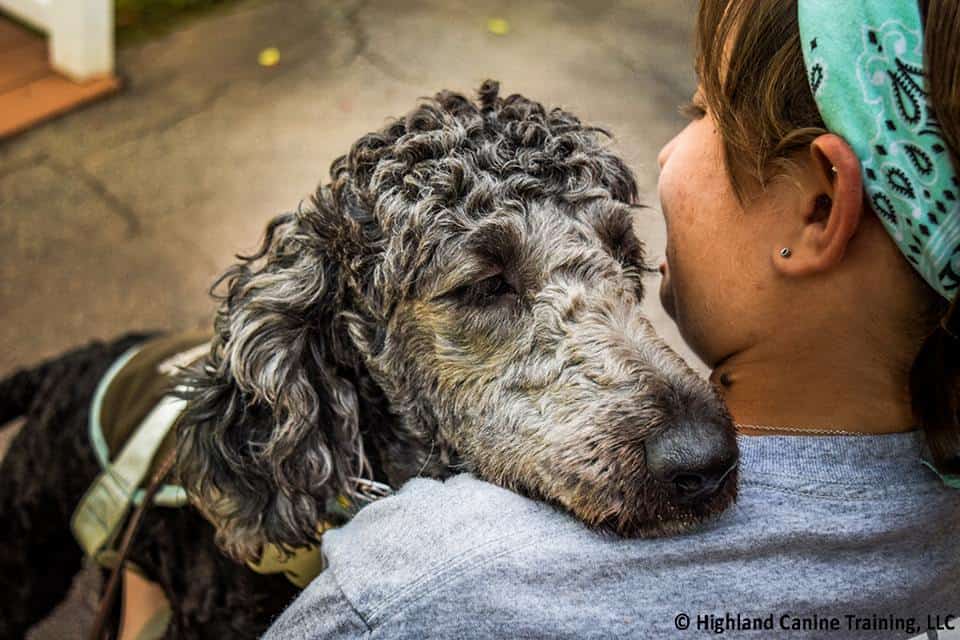Service dogs are becoming more and more popular in today’s world as the abundance of information people have access to has grown. Years ago, the majority of the general public only knew of guide dogs for the blind, or many had never even heard of service dogs at all. Today, service dogs are being trained to assist with a wide variety of disabilities and diagnosis. Education and awareness of assistance dogs have grown however, information on service dogs can be confusing, misleading, or even absent. What makes a dog a service dog?
Defining a
Service Dog

To clearly define a service dog, one must first fully comprehend the specific Acts pertaining to service animals and their handlers. A complete knowledge of the Federal Law is essential to effectively train and handle these dogs in accordance with the Law. The Americans with Disabilities Act (ADA) clearly defines a service dog as “dogs that are individually trained to do work or perform tasks for people with disabilities”. This means service dogs must be trained to take specific action when needed to assist a person with a disability.
A few examples of these trained tasks are:
- Physically interrupting an autistic child’s harmful self-stimulating behaviors
- Alerting to an oncoming seizure
- Retrieving dropped items for someone in a wheelchair
- Providing a stable platform for someone who has difficulty walking.
The tasks these canines are trained to do must directly relate to their owner’s disability and mitigate the symptoms of that disability.
Service Dog Requirements
Many service dogs are trained to perform potentially lifesaving tasks. Due to the important jobs these dogs are responsible for, there are certain requirements that must be taken into account for a dog to qualify as a legitimate working service dog.
Remember, not all dogs are capable of service dog work and many are washed out of service dog training programs if they do not pass specific temperament tests.

Healthy and Clean
Service dogs must be well-groomed and in good overall health. These dogs must travel and work with their owners in a variety of environments, meaning they must be healthy enough to offer their assistance and clean enough to enter grocery stores and hospitals.
Well-Socialized
Service dogs must be well-socialized. Amongst a crowd or while being suddenly approached by a stranger, service dogs must keep their cool. They are expected to perform their tasks regardless of the general public.
Environmentally Stable
Environmental stability is extremely important. If a dog is not accustomed to certain areas of the public and develops fears, it will not be able to work and complete its tasks as needed.
Safe and Reliable
Service dogs cannot be a danger to the general public. Even if a service dog is plastered in signs stating its job with warnings such as "Do not pet" or "Do not distract", it is inevitable that it will be approached by someone during its working life. The dog cannot show aggression or act out with intention of harm toward the person.
Under Control
Handlers must keep their service dogs under control. Service dogs must be leashed, harnessed, or tethered unless it interferes with the dog's work or the handler's disability prevents using these devices. In this case, the handler will still need to maintain control through voice, signal, or other effective means.
Emotional Support Dogs
Dogs are amazing animals, capable of bringing out the best in us. Their comforting presence can help soothe anxiety and provide support through hard situations. There is no doubt that a loving canine companion at its owner’s side can offer astounding benefits. It has even been scientifically proven that the calming presence of our beloved pets is extremely beneficial to our lives and health.

Emotional support dogs have also become popular, with the rising notice of service dogs. These dogs help support their owners with psychological disabilities simply by staying at their owner’s side during panic attacks, anxiety, immense stress, and more. These dogs must have wonderful temperaments and manners as they are typically welcome on planes, in housing facilities, and other select locations.
The difference between emotional support dogs and service dogs is that emotional support dogs do not actively mitigate a disability through trained tasks. These dogs offer assistance through their presence and calming temperament alone. The Americans with Disabilities Act (ADA) does not consider emotional support dogs as a type of service animal; therefore, they do not share the same rights as service dogs, especially while referring to public access rights.